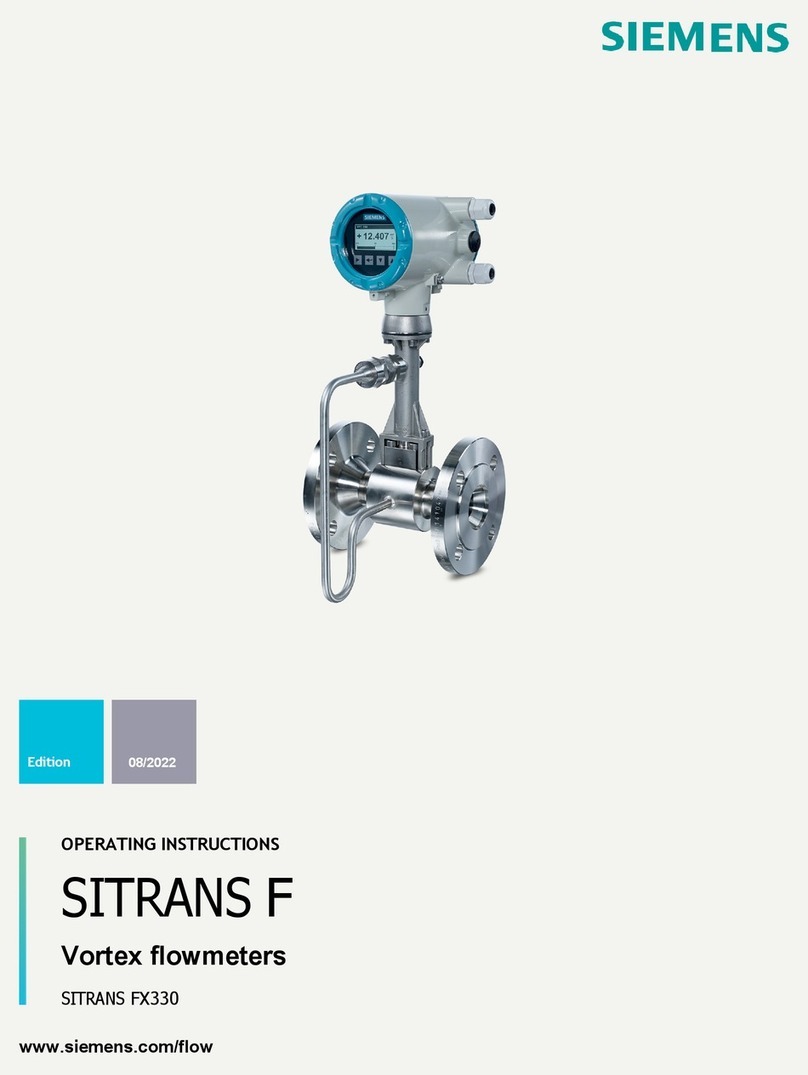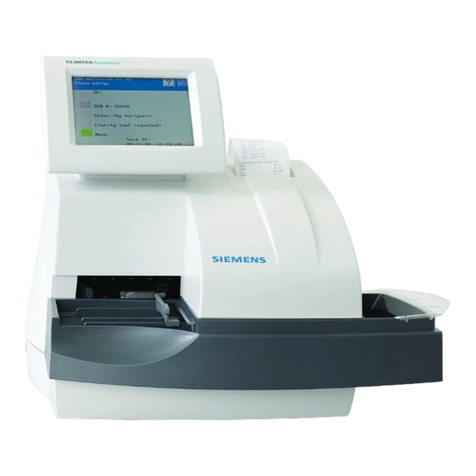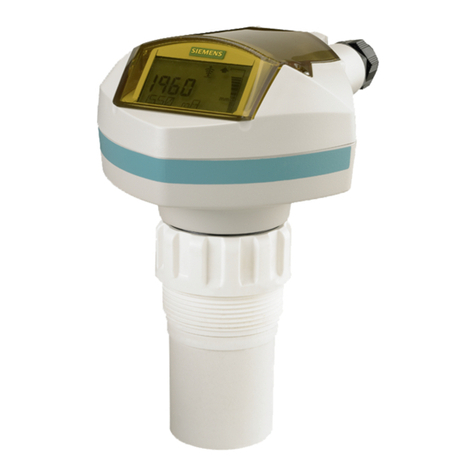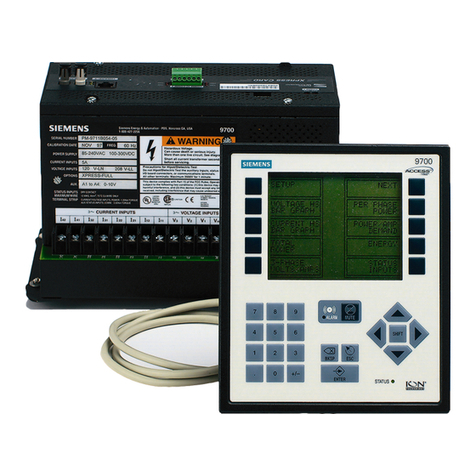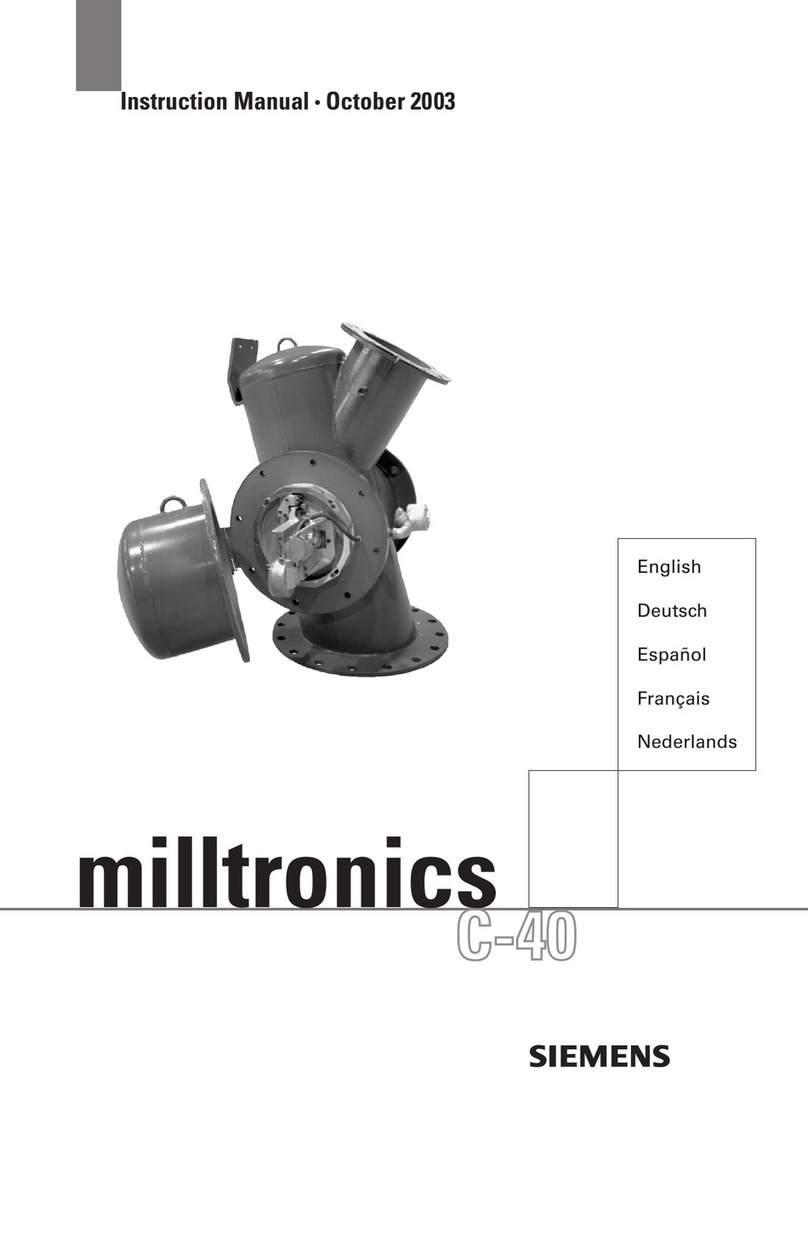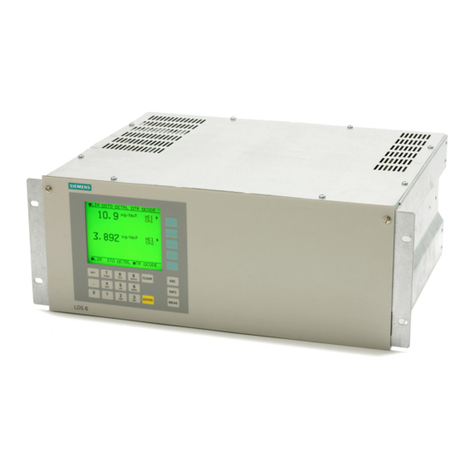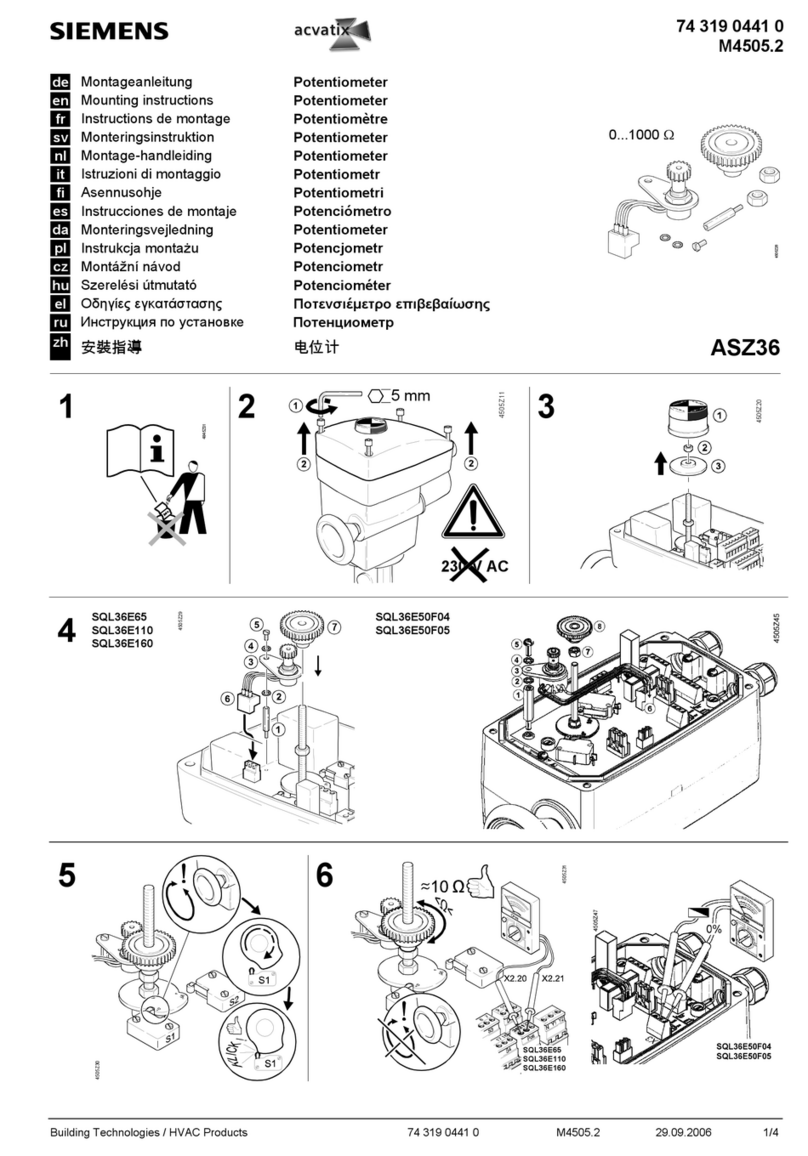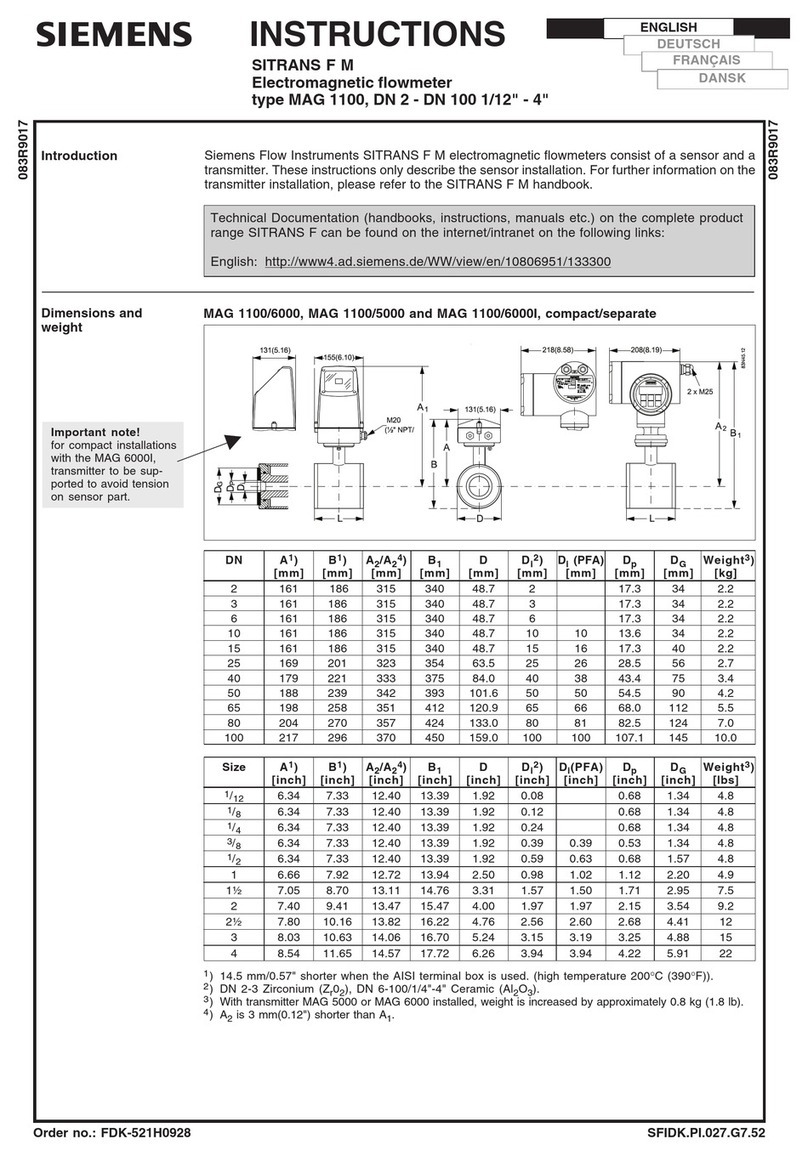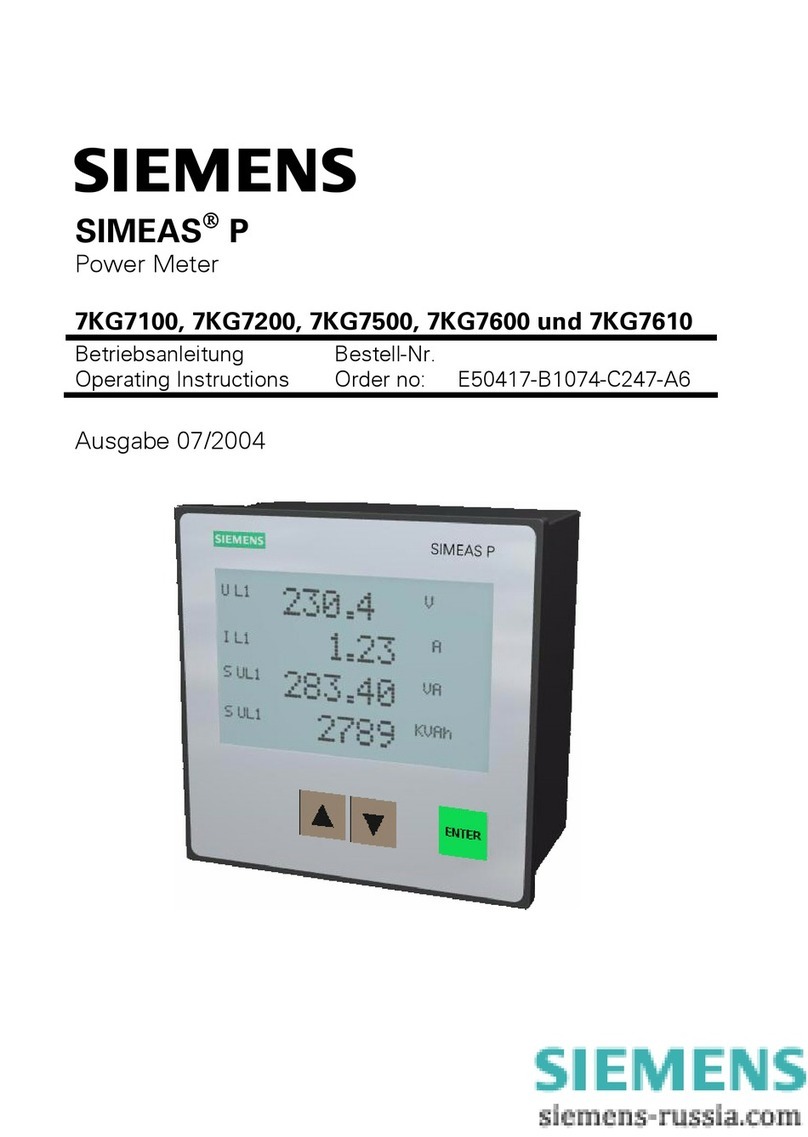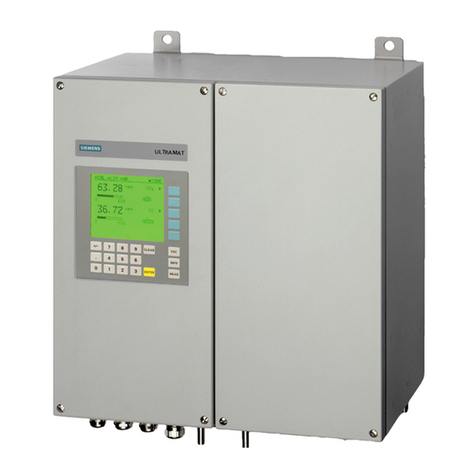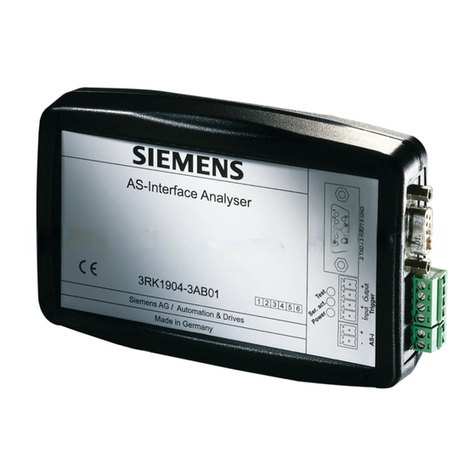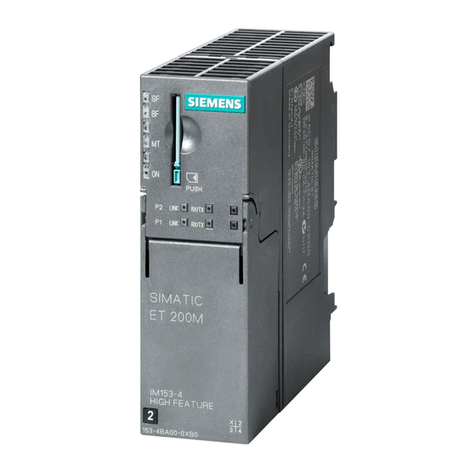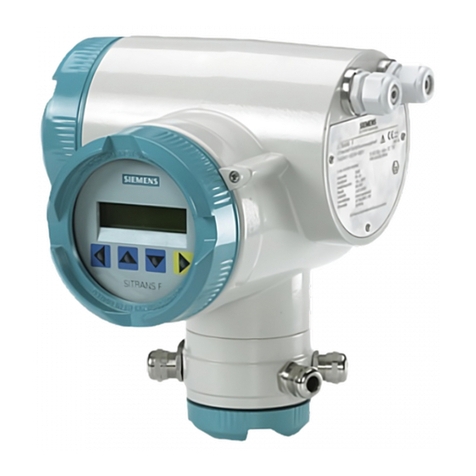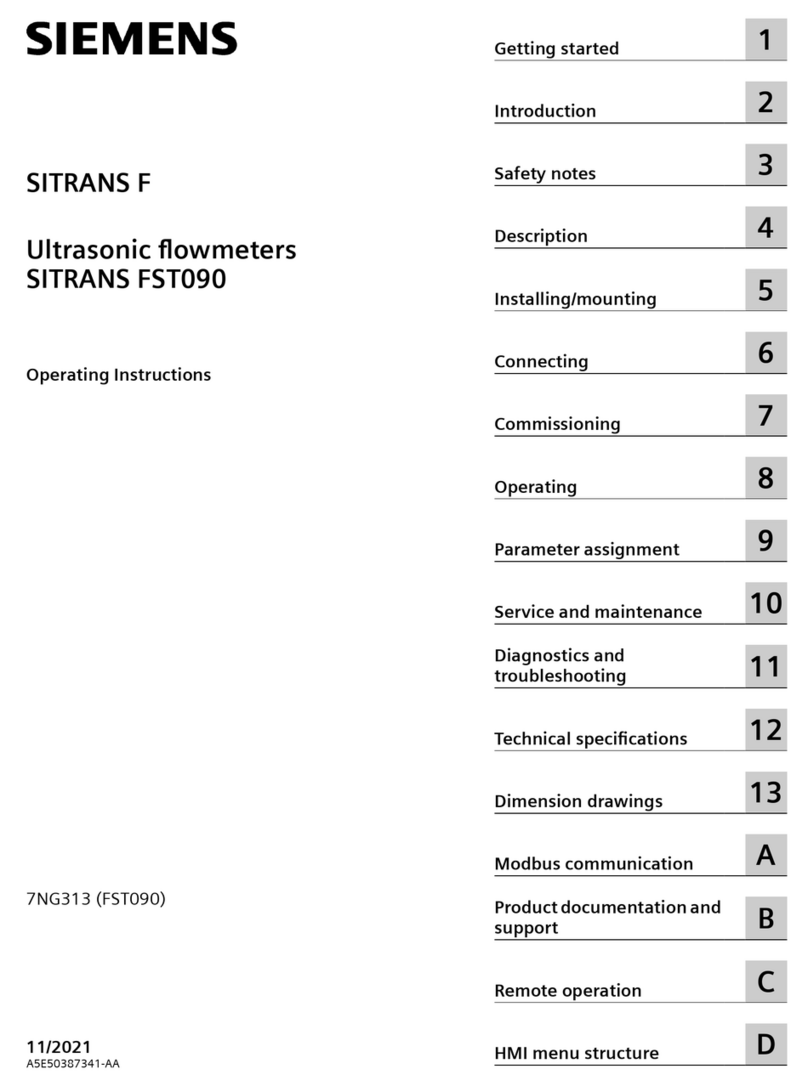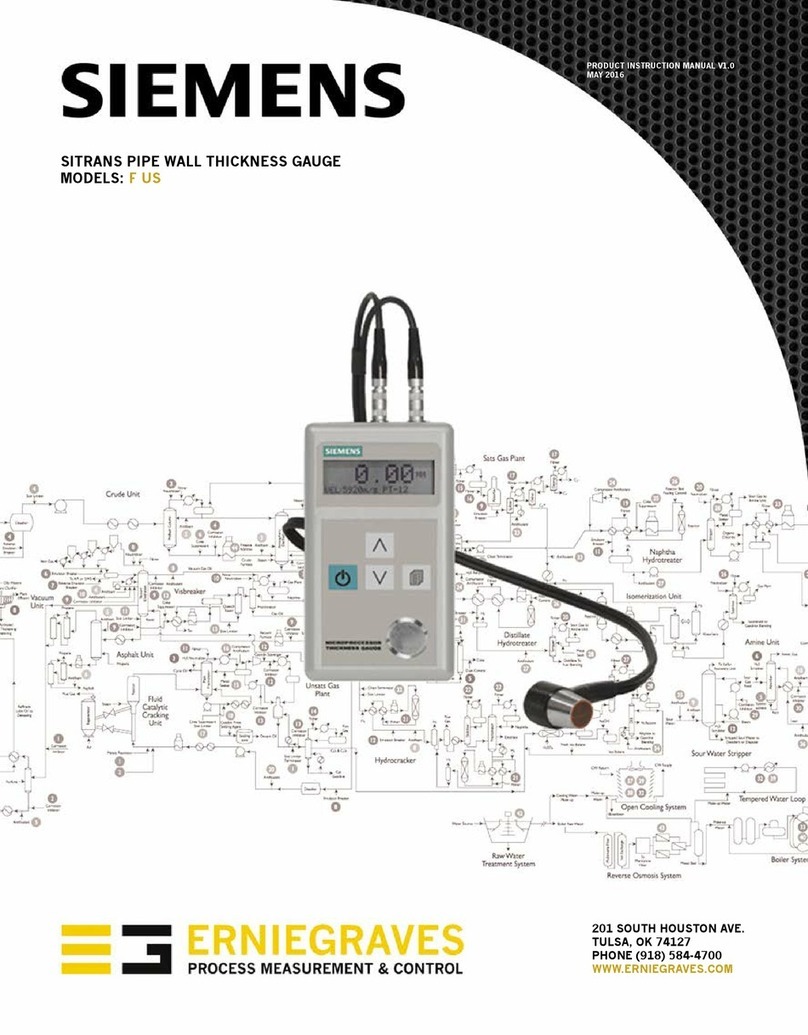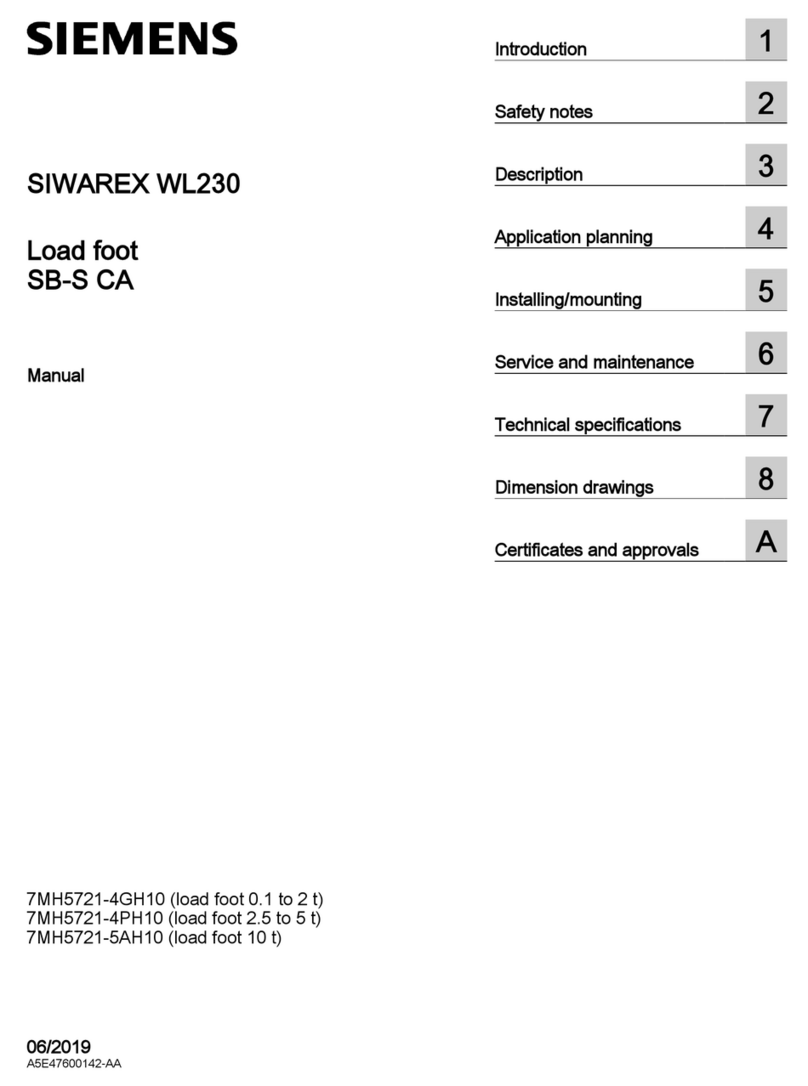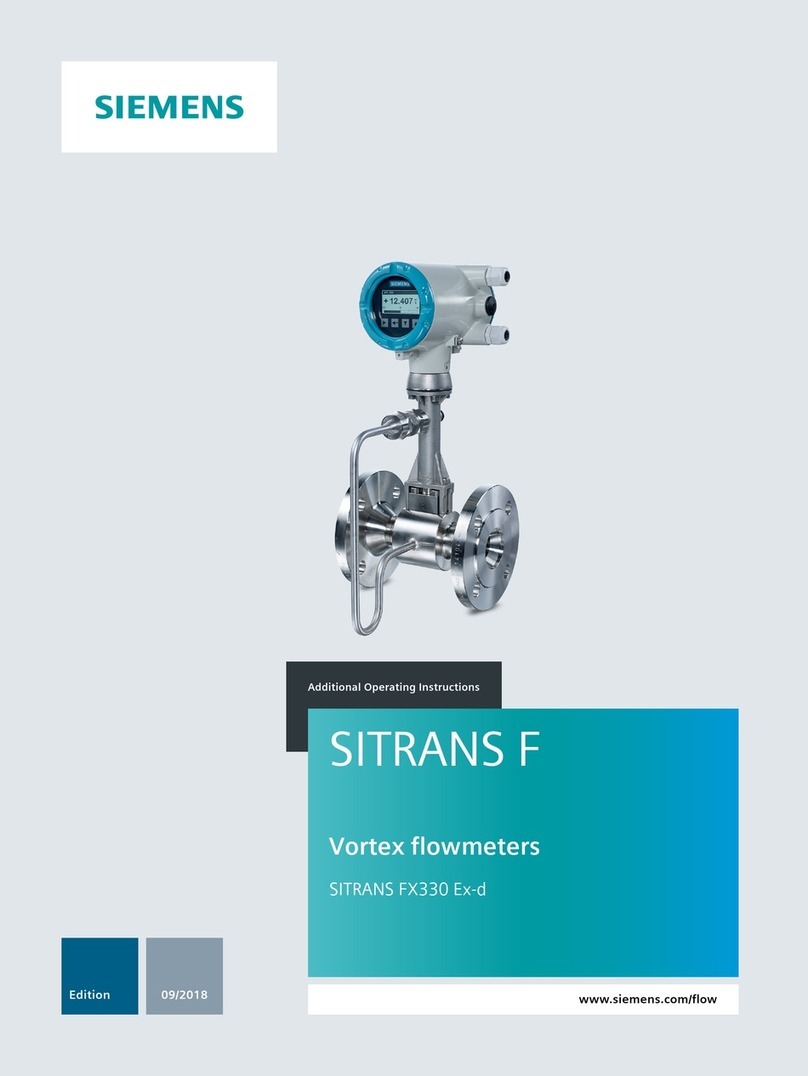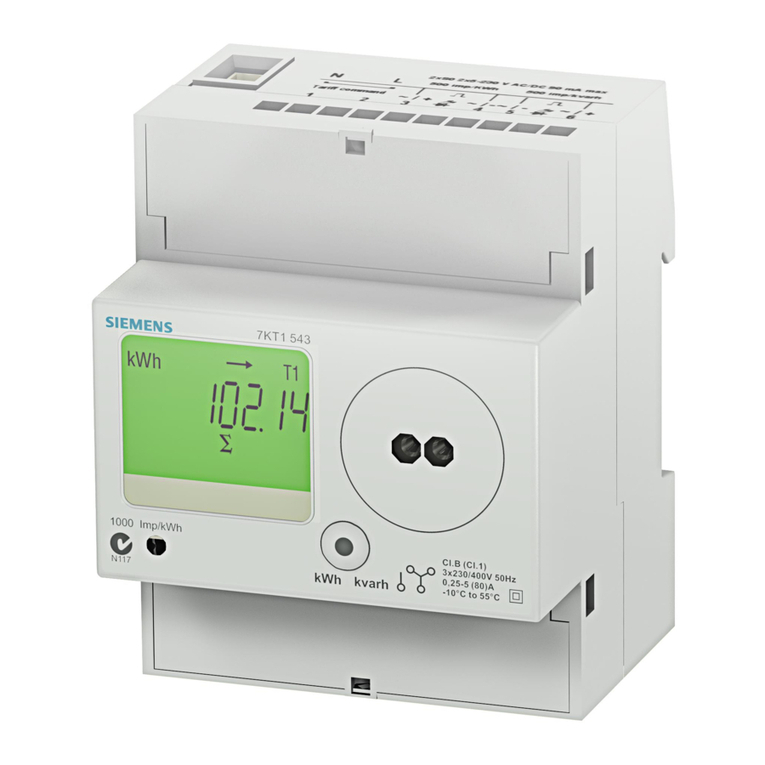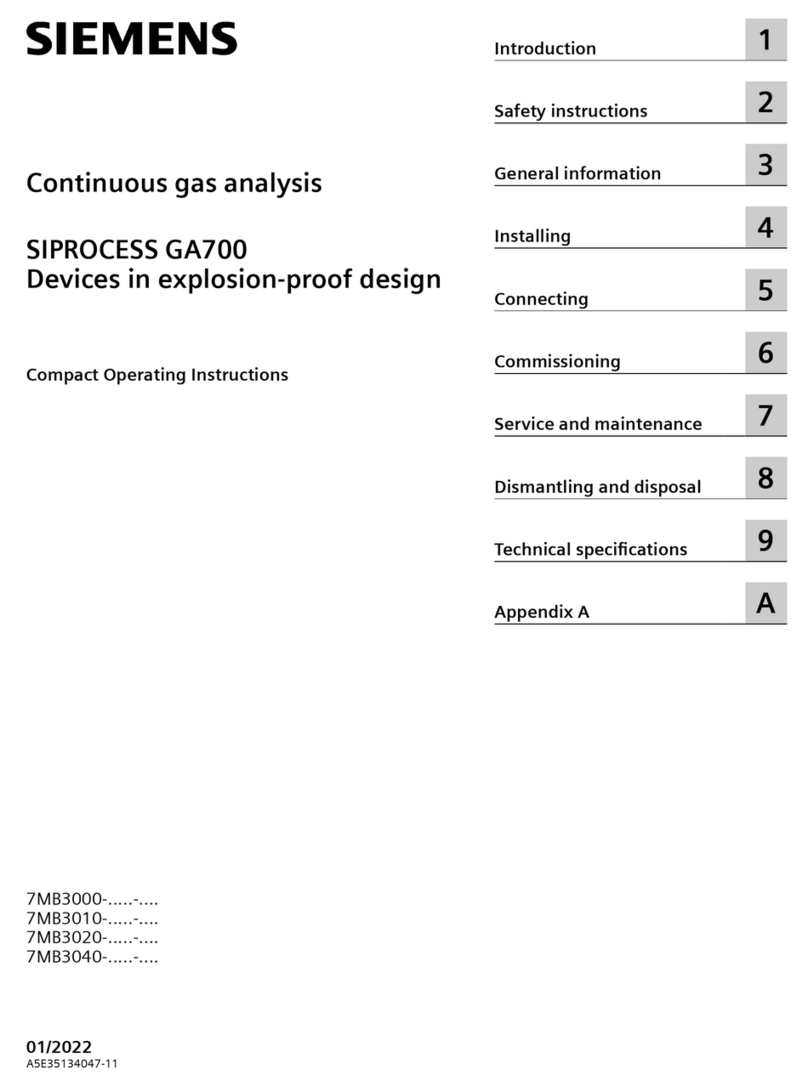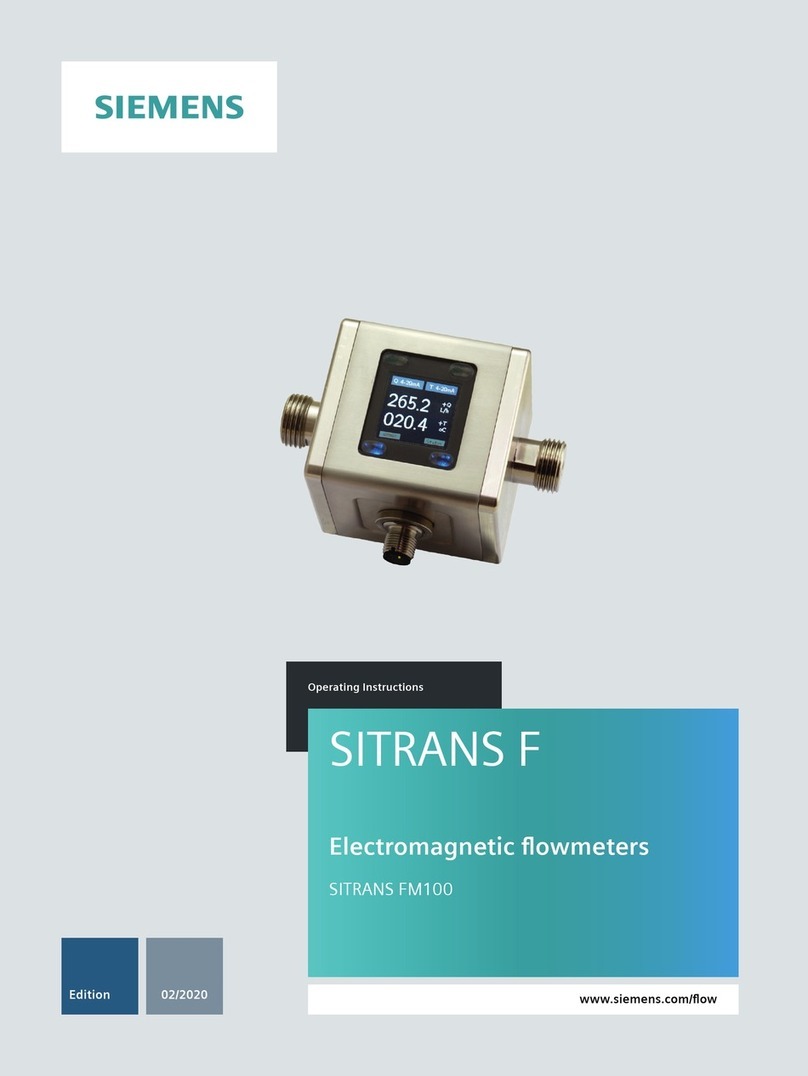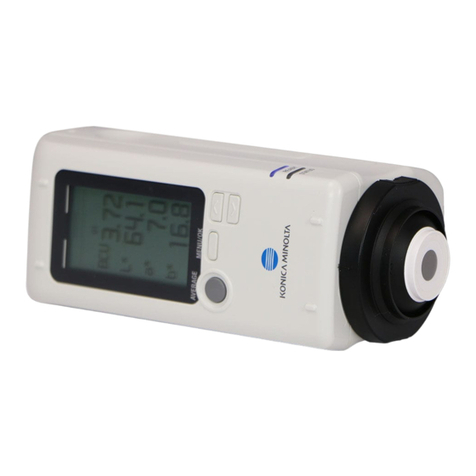
QFM81 Series Duct Hygrostats Technical Instructions
Document Number 155-707
April 21, 2010
Siemens Industry, Inc. Page 3
Mounting Notes
Air Duct Mounting
If the duct hygrostat is used for control, it must be mounted in the exhaust air duct after
the room to be controlled.
If the duct hygrostat is used for monitoring the maximum or minimum humidity level, it
imust be mounted in the supply air duct.
Mounting Positions The immersion sensor stem must be mounted either horizontally or vertically with the
stem pointing downward. Do not mount with the stem pointing upward.
To ensure accurate humidity measurements, it must be made certain that the air to be
measured is sufficiently mixed at the point of measurement.
SEN0508R1
SEN0509R1
<5m/s
>5m/s
Figure 2. Acceptable Mounting Positions.
The mounting orientation is dependent on the air velocity in the ductwork: at <5 m/s, the
holes in the stem must face the airflow; at >5 m/s, they must be perpendicular to the
direction of airflow (see Figure 2).
Minimum immersion
length When mounting the hygrostat in air ducts, the minimum immersion length of the stem
5.12 inches (130 mm) must be observed. The mounting flange supplied with the unit
allows the immersion length to be adjusted between 5.12 inches (130 mm) and 6.14
inches (156 mm).
Wall Mounting The hygrostat should be mounted on an inner wall approximately 4.9 feet (1.5 m) above
the floor and at least 1.6 feet (0.5 m) from the closest wall.
Mount the unit where there is a natural circulation of room air (do not mount near drafts,
in corners, behind curtains, too close to doors and windows, or on an outer wall).
Sources of heat and refrigeration (radiators, computers, televisions, concealed heating
pipes, hot or cold water pipes) must be at an adequate distance.
The hygrostat should not be exposed to direct sunlight.
For wall mounting, the mounting flange supplied with the hygrostat must be used.
